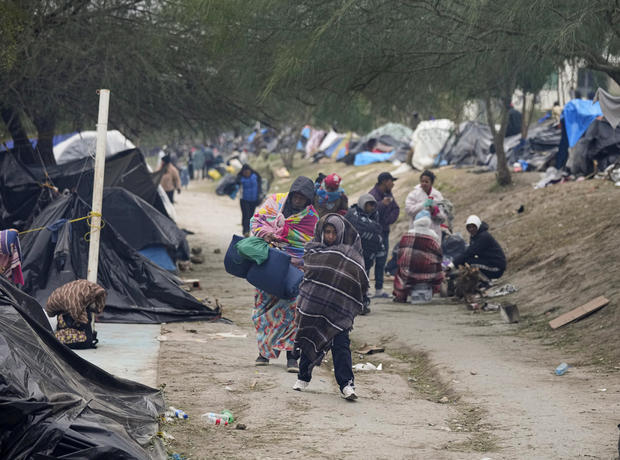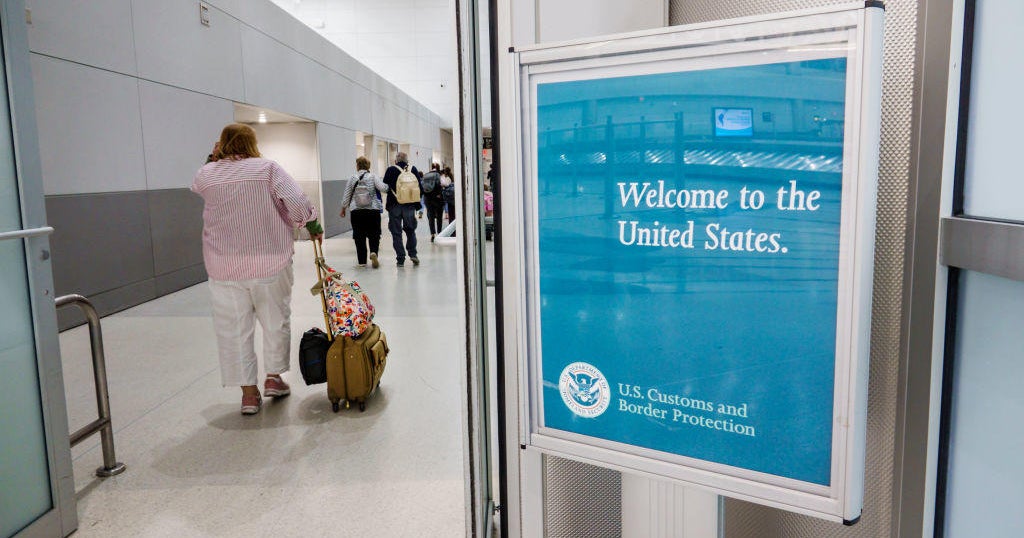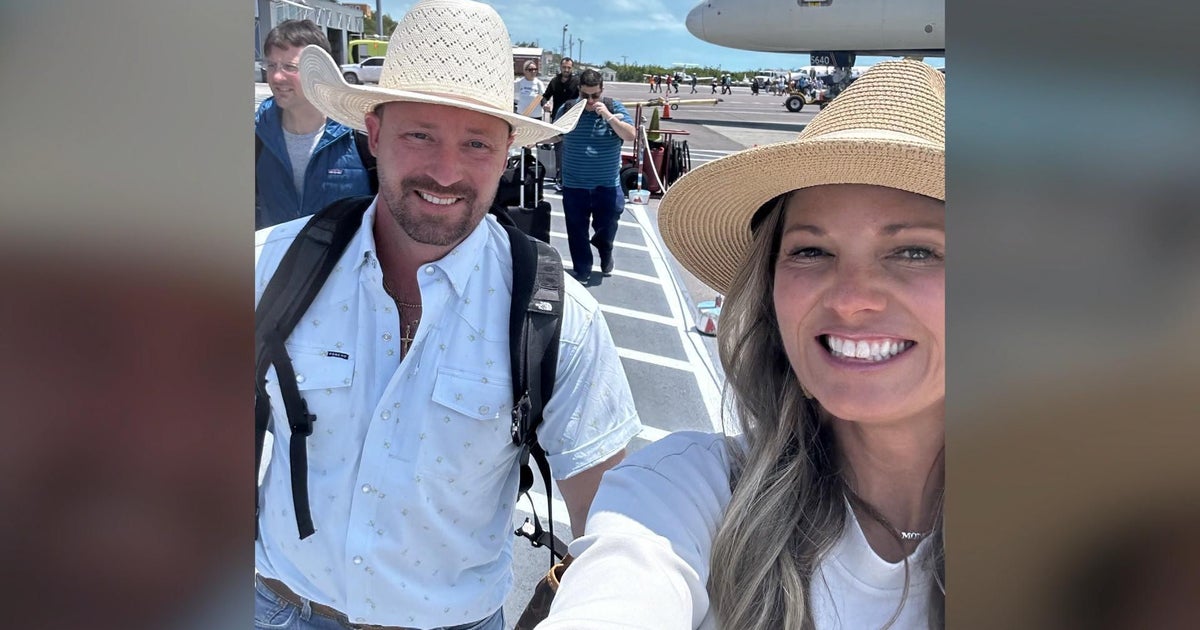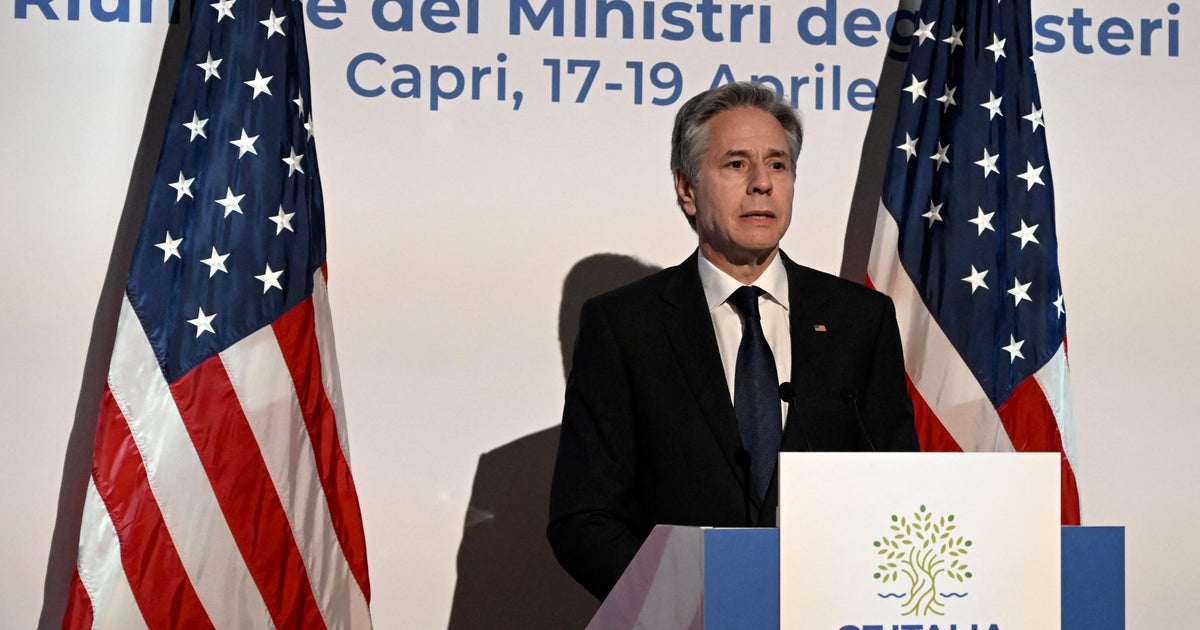U.S. aims to resettle up to 50,000 refugees from Latin America in 2024 under Biden plan
The U.S. will aim to resettle up to 50,000 refugees from Latin America and the Caribbean in the next 12 months as part of a Biden administration plan to welcome as many as 125,000 people fleeing violence across the globe in fiscal year 2024, according to internal government memos obtained by CBS News.
While the Biden administration plans to keep the annual 125,000 cap on refugees it has had in place for the past two years, it is also proposing dramatic changes to how those spots are allocated in fiscal year 2024, which starts in October, the internal State Department and Homeland Security documents show.
The departments' proposal envisions the U.S. admitting vastly greater numbers of refugees from the Western Hemisphere as a way to divert migrants away from the U.S.-Mexico border, where illegal crossings have spiked to record levels. The regional allocations are also ranges, as opposed to specific caps, to allow for flexibility in tweaking the program.
The proposal is expected to be sent to President Biden's desk after consultations with Congress on Wednesday, the documents say.
The 2024 refugee plan
The U.S. plans to allocate between 35,000 to 50,000 refugee spots for Latin America and the Caribbean, an unprecedented regional allocation, according to the documents. The figure more than doubles the allotment for fiscal year 2023, when 15,000 spots were reserved for the region.
The plan calls for 30,000 and 50,000 spots to be reserved for refugees from Africa, a region where U.S. resettlement efforts have historically been the most robust due to the wars and ethnic conflicts plaguing the continent.
The proposal also distributes between 30,000 and 45,000 refugee spots for the Near East and South Asia. The East Asia region would receive between 10,000 and 20,000 refugee spots and another 2,000 to 3,000 slots would be reserved for Europe, a sharp drop from its regional allocation of 15,000 spots in fiscal year 2023. Unlike previous years, there would be no unallocated, or "reserve," refugee spots in fiscal year 2024.
Unlike those seeking asylum along the southern border, refugees undergo background checks and medical exams overseas, typically in third countries, as part of a years-long vetting process. If American officials determine they are at risk of being harmed in their home countries because of their race, religion, political views or other factors, refugees are eligible for resettlement and permanent legal status in the U.S.
The Biden administration's proposal is slated to be shared with Congress on Wednesday, as required by federal law. It will be implemented once it is formally approved by the president, who typically signs off on such plans after DHS and the State Department agree on the regional allocations.
Biden's effort to increase refugee admissions
The refugee cap does not require the U.S. to resettle a specific number of refugees. Instead, it serves as a target for refugee admissions. But the ambitious 125,000-spot ceiling, the highest since the 1980s, reflects the Biden administration's ongoing efforts to dramatically expand refugee resettlement after the program was severely scaled back due to the COVID-19 pandemic and drastic cuts under the Trump administration.
Refugee admissions plunged to a record low of 11,411 in fiscal year 2021. The sharp drop stemmed from the pandemic crippling refugee processing and the Trump administration slashing the annual caps to record lows while restricting who was eligible for resettlement. While the refugee program had enjoyed bipartisan support since its inception in 1980, former President Donald Trump argued that refugees were economic burdens and potential national security threats.
Since taking office, the Biden administration has sought to rebuild the resettlement infrastructure. In fiscal year 2022, U.S. refugee admissions increased to 25,465, though that represented only 20% of the 125,000 available spots. In fiscal year 2023, which ends on Friday at midnight, the U.S. is on track to resettle more than 60,000 refugees, according to the internal federal data, the highest level since the end of the Obama administration. It would also be less than half of the 125,000-spot ceiling.
One of the ways the Biden administration is seeking to ramp up refugee admissions is by allowing, for the first time in the program's history, private American citizens to sponsor refugees. Historically, most refugees have been assisted by large resettlement organizations, most of them faith-based.
Refugee admission numbers do not include the hundreds of thousands of Afghans and Ukrainians the Biden administration has resettled since the fall of Kabul in 2021 and Russia's invasion of Ukraine last year. The vast majority of those refugees were welcomed through an immigration authority known as parole, not through the traditional refugee resettlement program.
Are the refugee targets realistic?
The allocation of tens of thousands of refugee spots for Latin American and Caribbean refugees next year illustrates the Biden administration's ongoing effort to deter illegal entries along the U.S.-Mexico by offering would-be migrants opportunities to enter the country legally.
While that strategy has sharply reduced illegal border crossings by some migrants, such as Cubans, Haitians and Nicaraguans, it has failed to deter migration by Venezuelans, who are crossing the U.S. southern border and Panama's Darién jungle in record numbers again.
It's also unclear how realistic the 35,000 to 50,000 refugee admissions target for the Western Hemisphere is. The U.S. is projected to resettle just 6,000 refugees from that region in fiscal year 2024, the internal documents show. This summer, the U.S. announced it would start vetting some Cubans, Haitians, Nicaraguans and Venezuelans in Mexico for refugee eligibility, but the program has yet to start.
Moreover, many migrants from Latin America may not be eligible for refugee status, since extreme poverty and economic hardship, no matter how dire, are not grounds to qualify for the program.





